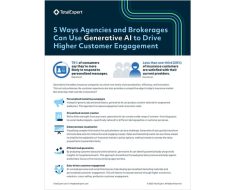Xiao-I Corporation and eRoad Join Forces to Leverage Large Language Models in HR

In a major stride towards revolutionizing human resources (HR) with artificial intelligence, China’s cognitive intelligence frontrunner, Xiao-I Corporation, has announced a strategic partnership with Shanghai eRoad Software Co., Ltd. The collaboration forms an integral part of the Hua Zang Ecosystem initiative, aiming to amplify digital efficiency for enterprises via AI-driven HR models. The partners are set to develop a unified AI product, dubbed ‘Generative HR AI LLM Commercial Product,’ aimed at streamlining the interpretation of China’s social insurance law for government and business usage.
Unifying Expertise for Innovative Solutions
Pooling their unique expertise, Xiao-I and eRoad are committed to creating innovative AI solutions. These include an intelligent knowledge management platform for HR and an AI assistant platform specifically designed for employees of small and medium-sized enterprises. Additionally, the partnership has plans to roll out smart service robots for businesses, all with a central focus on Large Language Models (LLMs).
Xiao-I’s Global AI Industry Impact
With over two decades of experience under its belt, Xiao-I’s technologies have found extensive application across various sectors. The company continues to increase its global footprint in the AI industry, with this strategic partnership marking yet another milestone. The collaboration with eRoad not only seeks to advance the use of LLMs in HR but also aims to provide personalized content, customer support, and equipment troubleshooting, all fine-tuned to specific business needs.
Future Commercialization Strategies
The announcement of the strategic partnership includes forward-looking statements about the potential impact of the collaboration and the future commercialization strategies of the developed products. The fine-tuning of LLMs involves a rigorous process, from selecting a pre-trained model to deploying the final product. These steps also include identifying the target domain or task, curating a domain-specific dataset, data preprocessing, adapting the model’s architecture, fine-tuning training, regularization and optimization for adaptability, evaluation, testing, iterative improvement, and deployment.





